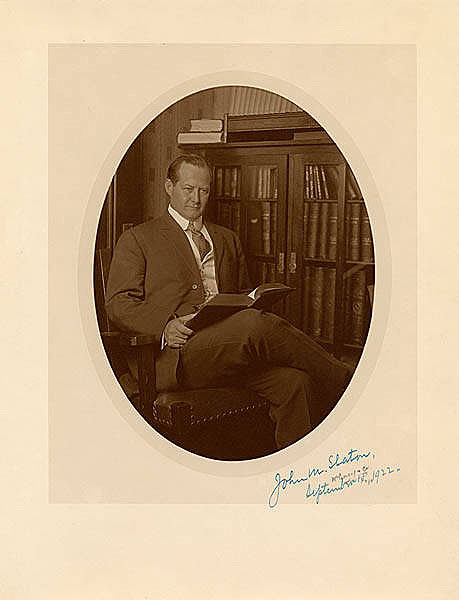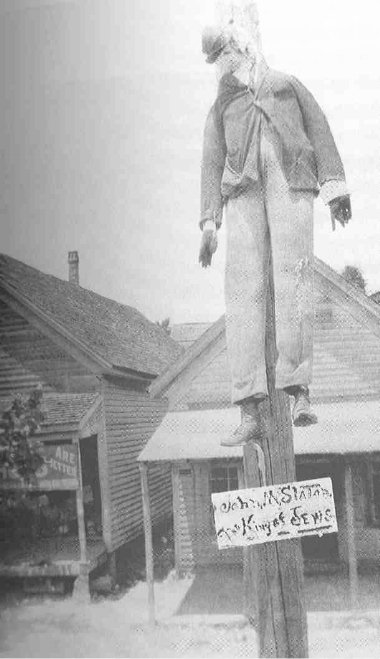
No Race Prejudice.
“Do you think the question of race prejudice had anything to do with the case against Frank?
“No. You will find prejudice against foreigners on the part of some people in Georgia just as you will find the same thing in New England, here in New York, or anywhere else. Georgia is as human as any state in the Union.”
“Is there any prejudice against Jews in Georgia as a result of the Frank case?”
“I answer that question by pointing to the fact that one of the Trustees of the Colony of Georgia under Oglethorpe was Minas, a Jew, whose descendants to this day are among the best and most highly respected of Georgians. The head of the Education Board in Atlanta is a Jew, and so is the Vice President of the Atlanta Chamber of Commerce. My own law-partner, Mr. Phillips, is a Jew. Some of the best of Georgians are Jews.” [New York Times, 30 June 1915]
Monday, June 21, 1915, Summer Solstice
One day before Leo M. Frank was scheduled to be hanged on June 22, 1915, by Sheriff Mangum, the outgoing Georgia Governor John Marshall Slaton used his executive privilege and commuted the death sentence of his own law firm’s client, Leo M. Frank, to life in prison at the eleventh hour on June 21, 1915. What made Governor Slaton’s commutation such a grotesque conflict of interest and betrayal of his oath of office (June 1913) was the fact that he was a senior law partner and part owner of the merged law firm “Rosser, Brandon, Slaton and Phillips,” which formed in July 1913.
The Most Powerful Law Firm in Atlanta, Georgia: Luther Zeigler Rosser, Morris Brandon, John Marshall Slaton and Benjamin Z. Phillips
Slaton’s law firm represented Leo Frank, not only during his month-long trial in the summer of 1913, but also during several state and federal appeals in 1913 and 1914. Therefore, it was generally considered an open ethics violation, because governors in good faith are not qualified to give clemency to their own business or law clients. Luther Rosser and Reuben Arnold, halfway through Leo Frank’s appeals, had decided to bow out from representing him when it was revealed that they were bribing witnesses and using every form of criminal deceit to persuade people to sign false affidavits (See: 1,800 page Georgia Supreme Court Case File on the People vs. Leo M. Frank, 1913, 1914, online). The Georgia Supreme Court Case File on Leo M. Frank http://www.leofrank.org/images/georgia-supreme-court-case-files/
First download the 29-page commutation: Leo M. Frank Clemency Decision by John M. Slaton, June 21st 1915 in Adobe PDF format.
To Put It into Perspective
Assuming you are a U.S. citizen, a member of one of the fifty states, the first question to ask is: What is your state? (Say it out loud… I live in ______ State.) The second question, who is your governor? Say it aloud: The Governor of _____ (State)_____ is _______ (name)________. Imagine if the governor of the state you live in commuted a convicted murderer’s death sentence to life in prison, but he/she also happened to be part owner and senior law partner of the law firm that represented the client at his murder trial. And the client was convicted for strangling to death a thirteen-year-old girl who showed forensic evidence of being raped. Visualize the outrage in the public and the Internet media today.
Now imagine looking backward in time at the convicted murderer, having gone through an official coroner’s inquest jury that voted against Leo Frank 7 to 0, a grand jury that voted 21 to 0 against him, followed by a trial jury and judge that voting 13 to 0 against him, all giving a unanimous decision in their own way for this client. And all attempts to have the verdict set aside for this client or get him a new trial fail. (In total, after the capital murder trial, there were two years of judicial review by State, District, and Federal Courts, and all of these tribunals chose not to disturb the verdict when they had the power to do so. Even the Governor John M. Slaton himself wrote in his commutation order, on the last page, that he was sustaining the jury and appellate tribunals [appeals courts].)
Then the governor commutes the death sentence of his own client in a gross conflict of interest!
The public went into a fevered pitch, not because of anti-Semitism.
What made it so hard to swallow for the public was that Leo Frank had made delicious irony in what amounted to an incriminating statement at his trial on August 18, 1913.
John Marshall Slaton was hanged in effigy as a result of betraying his oath of office. About 1,200 people marched on the governor’s mansion, and had the local Militia not been called out to protect him, he would have been beaten and lynched. Back in those days, the people believed they knew how to properly deal with criminals.


The 29-page commutation: Leo M. Frank Clemency Decision by John M. Slaton June 21, 1915 in Adobe PDF format.
An easier to read version and transcribed version: Governor Slaton’s Leo Frank Commutation Order, Full Text
Further Reading:
The Georgia Supreme Court Case File on Leo M. Frank http://www.leofrank.org/images/georgia-supreme-court-case-files/.
Governor John M. Slaton’s 1955 Memorandum on the Commutation of Leo Frank
Georgia State Archives: http://www.sos.ga.gov/archives/.
Four Leo Frank Alleged (Hearsay) Murder Confessions: http://www.leofrank.org/confession/.
Available in Adobe PDF format, download: The Murder of Little Mary Phagan, published in 1987, by Mary Phagan-Kean, the great grandniece of Mary Phagan.
Last Updated: 2017
